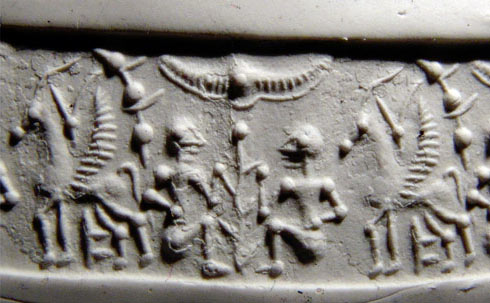The ancient Sumerian calendar divided a year into 12 lunar months of 29 or 30 days. Each month began with the sighting of a new moon. Sumerian months had no uniform name throughout Sumeria because of the religious diversity. This resulted in scribes and scholars referring to them as "the first month", "the fifth month" etc. To keep the lunar year of 354 days in step with the solar year of 365.25 days, an extra, intercalary month was added every three years or so, much like a Gregorian leap year.
There were no weeks in the Sumerian calendar. Holy days and time off from work were usually celebrated on the first, seventh and fifteenth of each month. In addition to these holy days, there were also feast days which varied from city to city. A day was divided into twelve hours, six daylight hours, each lasting one-sixth of the day, and six nighttime hours, each lasting one-sixth of the night. This meant the length of hours varied from season to season, daylight hours being shorter in the winter and longer in the summer and vice versa.

Next page: mayan calendar
